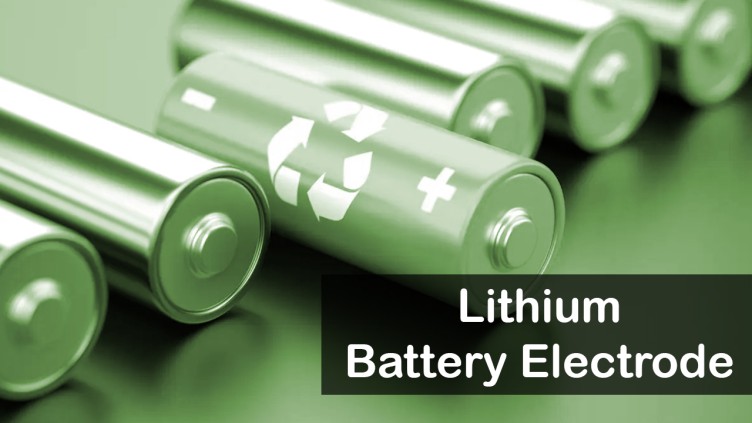The lithium battery Electrode has a different chemistry as the composition gives out energy through a chemical process. But do you know how the chemical reaction takes place and what are the basic designs of electrodes? What are some common defects that impact battery performance? Then you must read this article.
Lithium Battery Electrode Technology
Lithium battery electrode is composed of two distinct parts; the current collector and the active material. The current collector is typically made out of aluminum, copper, or stainless steel and serves as the electrical contact for the cell. The active material, often referred to as the cathode or anode, is responsible for storing and delivering the energy in the cell.

Design Basics: The design of the battery electrodes is one of the most important factors in determining the performance and safety of the cell. The current collector must be designed to allow efficient electron transport, while the active material must be designed to store and deliver energy in an efficient and safe manner. The electrode should also be designed to minimize any internal resistance and to provide good electrical contact between the current collector and the active material.
Common Defects: Common defects in lithium battery electrodes include poor contact between the current collector and the active material, delamination of the active material from the collector, and cracking of the active material due to thermal or mechanical stresses. Poor contact between the current collector and the active material can lead to inefficient electron transport and decreased battery performance. Delamination of the active material from the collector can lead to a decrease in the surface area for electron transport and an increase in internal resistance. Cracking of the active material can lead to short circuits and decreased cell performance.
Impact on Battery Performance: Poorly designed lithium battery electrodes can lead to decreased performance and safety of the cell. Poor contact between the current collector and the active material can lead to inefficient electron transport and decreased battery performance. Delamination of the active material from the collector can lead to a decrease in the surface area for electron transport and an increase in internal resistance. Cracking of the active material can lead to short circuits and decreased cell performance.
Basics of Polar Film Design
Polar film design in a battery is a method of creating a barrier between the positive and negative terminals of a battery. The polar film is a thin sheet of material that is placed between the anode and cathode of the battery. This film prevents the electrons from crossing from one terminal to the other, thus preventing short circuits. In addition, the polar film also provides insulation, helping to protect the battery from overheating. The polar film is typically made from a combination of polyethylene and polypropylene and is designed to be flexible enough to fit within the battery, but strong enough to provide a reliable barrier.

Types and detection of Polar Defects
Polar defects in a battery are defects that affect the ability of the battery to store or transfer power. These defects can be caused by a variety of factors, including improper manufacturing, improper storage, or damage due to use.
Types of Polar Defects:
1. Open Circuit Defects: These defects occur when the battery cells cannot maintain a continuous electrical connection between the positive and negative terminals. This can be caused by a short circuit, corrosion, or a broken terminal.
2. High Internal Resistance Defects: These defects occur when the resistance inside the battery cells is too high, which reduces the amount of power the battery can store or transfer. This can be caused by a manufacturing defect or damage to the cells.
3. Low Voltage Defects: These defects occur when the voltage output of the battery is too low. This can be caused by a manufacturing defect, a damaged cell, or a short circuit.
Detection of Polar Defects:
1. Visual Inspection: This involves inspecting the battery cells for any signs of damage or defects.
2. Voltage Measurement: This involves measuring the voltage output of the battery to determine if it is too low.
3. Resistance Measurement: This involves measuring the internal resistance of the battery to determine if it is too high.
4. Capacity Measurement: This involves measuring the capacity of the battery to determine if it is too low.
5. Thermal Imaging: This involves using a thermal imaging camera to detect any areas of heat loss, which can indicate a defect.
Effect of polar surface defects on battery performance
Polar surface defects can have a significant impact on battery performance. Polar surface defects have the potential to lead to increased internal resistance, decreased capacity, and decreased cycle life. These defects can cause increased power dissipation and reduced charge efficiency, resulting in decreased run time and decreased battery life. Additionally, they can lead to increased heating, resulting in shorter battery life and decreased safety. To maintain optimal battery performance, it is important to identify and address any polar surface defects.
Conclusion
The performance of the battery determines its quality. We all use batteries in one way or another other but do we really know the factors that really affect the performance of the battery? This article addresses the defects and their impact on the battery.
About Semco – Semco University is an educational website that is catering to the needs of students and researchers. Offering information on Lithium-ion batteries. The resources and content are compiled from various sources including manufacturers, test labs, crowdsourcing, etc. Our motto is to provide a viable resource for companies, students, and enthusiasts interested in participating in the Li-ion Battery industry. Our initiative is to make people aware of the benefits, and opportunities of the revolutionary Lithium Batteries for multiple applications
For More Updates Follow Us :

